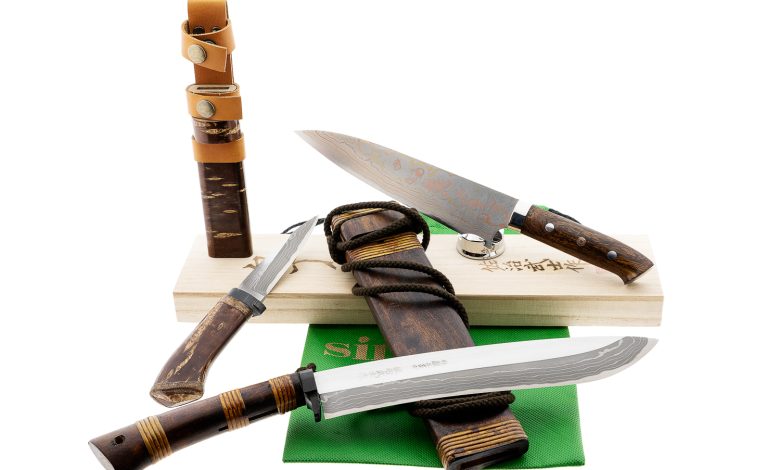CHOOSE THE BEST DAMASCUS KNIVES

TRADITIONAL DAMASCUS KNIVES.
In our third installment of tips to buy the best Damascus kitchen knives, we are going to choose between the best Damascus knifemakers and talk about the traditional Damascus kitchen knives and traditional Hocho.
Kitchen knives are the most important and valued kitchen utensils by chefs, there is an ancient culture in which the making of the knife, the types of steel used, the techniques used for its manufacture, the tempering, the tempering in iron powder, and its slow cooling to remove the stresses of the steel maintaining its hardness and, of course, its fit and finish.
Custom Damascus knives are designed for all kinds of uses in the kitchen, but asymmetric or single-bevel knives are mostly best served by using them to prepare fish. In our last issue we talked about the “Traditional Hocho” knives or traditional Damascus kitchen knives, in which we found by type-size of the knife from smallest to largest:
- petty knife
- Deba
- Yanagi
- So.
THE DAMASCUS PETTY KNIFE
The Damascus Small Petty Asimetric knife is a kitchen knife with an asymmetric blade. Whose size does not exceed 15 centimeters of the blade and which are used to clean small fish. Both to remove the skin and to cut off the head if necessary, Thanks to their asymmetrical blade. They rest perfectly on the board and facilitate the removal of the skin from the fish.
Its asymmetric edge also has the advantage of working like a guillotine, giving a clean. Biased cut to the food to be cut, and is also very easy to sharpen with the corresponding sharpening stone.
THE KNIFE MUST
A Damascus Deba type knife has the main characteristic of having an almost triangular blade. With a steel thickness close to 1 centimeter, and its asymmetrical blade. Wooden handles, and horn ferrules, it would be an authentic traditional Damascus kitchen knife.
The functions are basically to open and separate the heads of medium-large fish, although they are also valid for butchering birds. To separate the loins of the fish, it is a knife that works very well, as it supports perfectly if its edge is touched to the central spine of the fish.
THE YANAGIBA KNIFE
The Damascus Yanagi or Yanagida knife is another essential classic along with the Deba. It has the main characteristic of having a thin, elongated and rigid blade. It can be symmetrical or asymmetrical, which allows you to remove the skin very well from medium-large sized fish. of preparing and cutting the already cleaned loins of the fish with guarantees of success.
Its thickness is much smaller than a Deba. It is very well balanced and very manageable, despite moving in sizes from 24 centimeters to 36 centimeters. Its thickness is similar to a Small Petty, approximately 3 millimeters.
THE TAKO AND TAKOHIKI KNIFE
The Damascus take knife is also called a knife to cut octopus. Which has the great virtue of having a square cut tip or beveled in the shape of both to be able to cut the legs at the beginning attached to the body of the octopus, with an octagonal or beveled handle. in the form of “D”, which,
It allows you to cut the octopus legs quickly and precisely. As well as being extremely practical for making the Sashimi cut, that is, a cut of approximately two centimeters thick on the loins of the cleaned fish.
Its thickness of around 2.5 millimeters, makes it have a very fine and precise cut. With the characteristics of the rest of traditional Damascus kitchen knives. That is, generally magnolia wood handle, water buffalo horn ferrules and,
made of Mogami or shinigami steel, in addition to having a single bezel or asymmetrical.
Perhaps the most important thing about a Damascus knife is the steel base with. Which it is made since it is very important to know that there are only two types of authentic Damascus steel knife, one of them called blue steel or Shirogami, which is pure, it says it is only made up of iron and carbon and Aogami steel, or white steel, whose composition is with iron, carbon, tungsten, and vanadium.
read more




